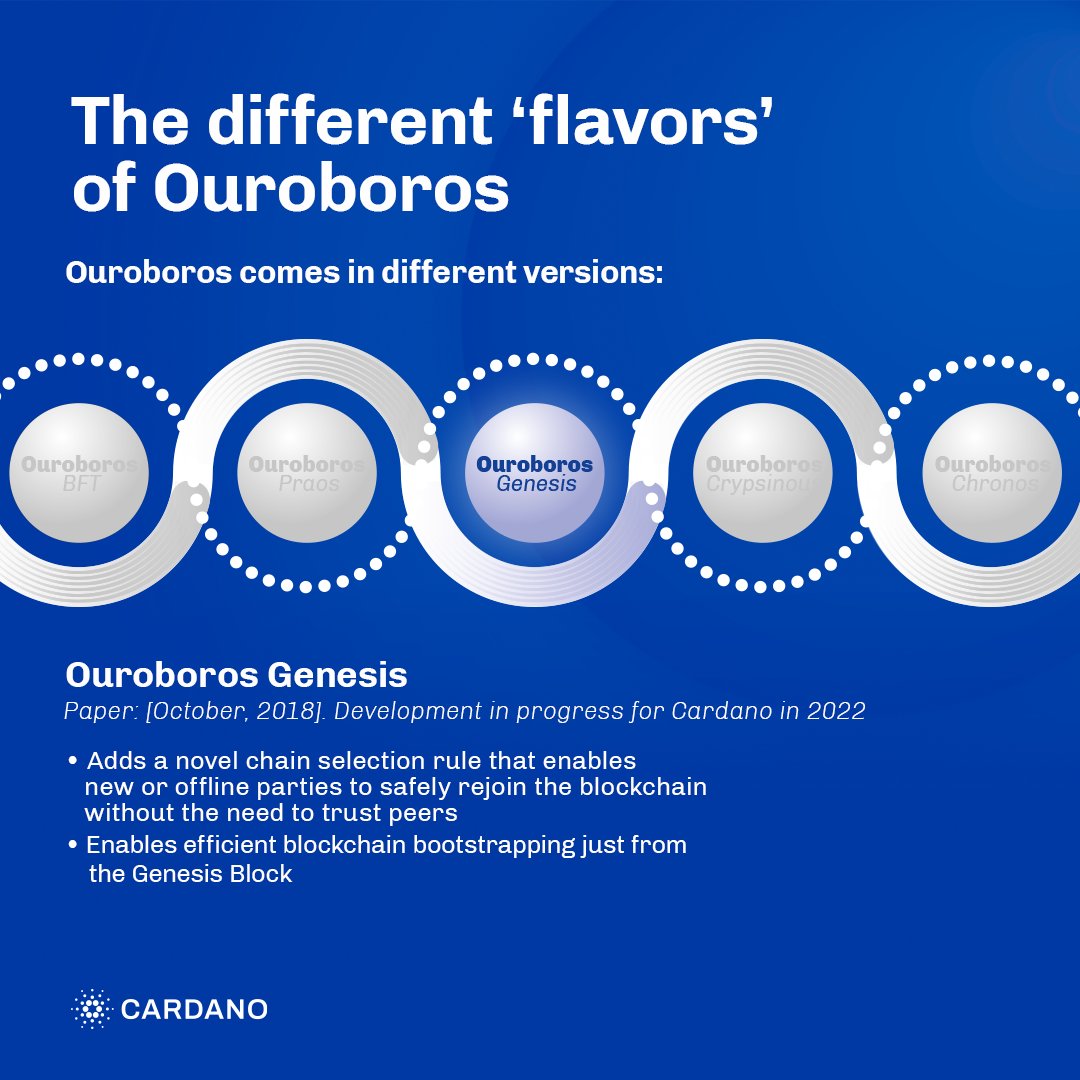Ouroboros is the consensus protocol for #Cardano, the first provably secure proof-of-stake protocol, and the first blockchain protocol based on peer-reviewed research.
🧵1/n
🧵1/n

Combining unique technology and mathematically verified processes, Ouroboros guarantees and supports the security and sustainability of any blockchain implementing it.
🧵2/n
🧵2/n
The result is a protocol with proven security guarantees, able to facilitate the propagation of global, permissionless networks with minimal energy requirements.
🧵3/n
🧵3/n
In this thread, we look at the different ‘flavors’ of Ouroboros and how it continues to evolve over time.
🧵4/n
🧵4/n
🤔But first, why is it called Ouroboros and how is it different from other consensus protocols out there?
🧵5/n
🧵5/n

Ouroboros comes in different versions. It all began with Ouroboros Classic 🌿deployed on Cardano in 2017. This laid the foundations.
🧵6/n
🧵6/n

Ouroboros BFT came next. Deployed on #Cardano in May 2020, it helped prepare Cardano’s network for Shelley’s release and, with that, its decentralization. BFT served as a transition point from Classic to Praos.
🧵7/n
🧵7/n

Ouroboros Praos was deployed on Cardano in 2020 introducing decentralized block production, stake pools support, incentives 🍬 and enhanced security properties 🛡️
🧵8/n
🧵8/n

The next evolutionary step in our journey is the deployment of Ouroboros Genesis. Development is currently in progress for #Cardano deployment in 2022.
🧵9/n
🧵9/n

Ouroboros Crypsinous equips Genesis with privacy-preserving properties🔐 Crypsinous isn’t currently planned to be implemented on Cardano, but it can be used by other chains for increased privacy settings.
🧵10/n
🧵10/n

⌛The research in the Chronos paper demonstrates how you can dramatically boost the resilience of critical telecommunications, transport & other IT infrastructures that require the synchronization of local time to a unified network clock that has no single point of failure
🧵11/n
🧵11/n

Finally, Ouroboros Leios puts forth the concept of input endorsers. It implements a number of related accompanying innovations to optimize the throughput of the consensus protocol.
🧵12/n
🧵12/n

What is coming next for Ouroboros?
IOG Chief Scientist of IOG @sol3gga talks about Leios and input endorsers in the latest video - Advances in Ouroboros: Scaling for Future Growth.
Check it here: bit.ly/3zw3q66
#Cardano $ADA
🧵14/14
IOG Chief Scientist of IOG @sol3gga talks about Leios and input endorsers in the latest video - Advances in Ouroboros: Scaling for Future Growth.
Check it here: bit.ly/3zw3q66
#Cardano $ADA
🧵14/14
• • •
Missing some Tweet in this thread? You can try to
force a refresh






